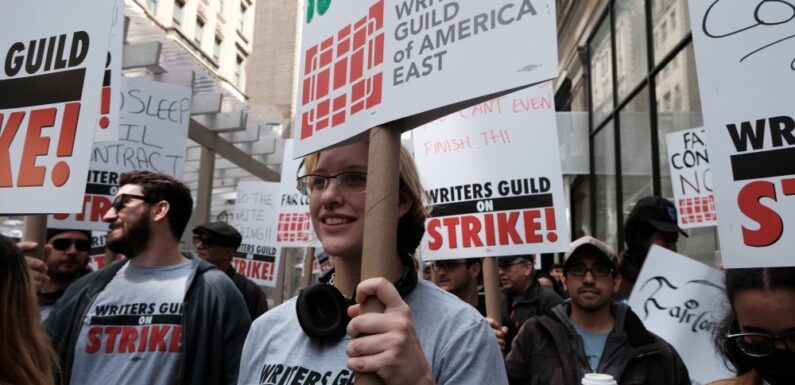
The Writers Guild of America resumed bargaining with the major studios on Wednesday, as the 142-day writers strike closed in on a record duration.
In a break from previous sessions, several top CEOs joined in the talks on Wednesday in Sherman Oaks. They were Bob Iger of Disney, Ted Sarandos of Netflix, Donna Langley of NBCUniversal and David Zaslav of Warner Bros. Discovery.
Earlier on, the CEOs generally left the bargaining to professional negotiators at the Alliance of Motion Picture and Television Producers.
But as the strike has worn on, they have become more personally involved. On Aug. 22, the CEOs met with WGA leaders for what the writers described as a “lecture.”
In the month since then, each side said it was waiting for the other to issue a response to its latest proposal. At one point, the WGA suggested that the AMPTP was too inflexible to adequately meet writers’ demands, and might have to be broken up.
The studios have expressed frustration at being forced to “negotiate against ourselves,” while the WGA has said the studios have yet to fully address the guild’s entire agenda.
The WGA is seeking a residual formula that would be based on the number of views each show gets on a streaming platform. The studios have refused to do that, though they have agreed to share some viewership data with the union.
The guild is also seeking a mandatory minimum staffing level for each writers room in TV. The AMPTP countered with a proposal to allow showrunners to hire at least two writers per show.
The AMPTP is also offering a 15% first-year hike in minimum rates for writer-producers, which would include a new minimum tier 10% above the rates for story editors. The WGA has sought a tier that would be 20% higher than the story editor rate.
The studios have already accepted a WGA proposal to guarantee that if writers use artificial intelligence to help write their scripts, they will not lose out on credit or pay. The two sides have been hung up, however, on a union demand that AI not be allowed to train on writers’ scripts.
The longer the strike goes on, the less likely it becomes that the networks can salvage any part of the 2023-24 TV season. Numerous film releases have already been pushed back into 2024, and the Emmys have also been postponed to January.
The strike has also taken a toll on below-the-line workers, who have applied for more than $54 million in “hardship withdrawals” from their retirement accounts.
SAG-AFTRA has also been on strike for 69 days. The actors’ union is focused on many of the same issues as the writers, including streaming residuals and hikes in minimums. The actors’ union is also focused on guaranteeing “informed consent” for actors over the use of AI to recreate their likenesses.
The two longest strikes in WGA history were in 1960 and 1988. The former was settled in two stages — first with film companies, then with TV companies. The film strike lasted 148 days (including the date on which the new contract was ratified). The TV strike lasted 156 days.
The 1988 strike, which is generally counted as the longest in guild history, lasted 154 days, including the ratification date.
The 2023 strike will surpass the 1988 strike if ratification occurs on or after Oct. 3. It will surpass the 1960 TV strike if the new contract is ratified on or after Oct. 5.
Matt Donnelly and Cynthia Littleton contributed to this story.
Read More About:
Source: Read Full Article